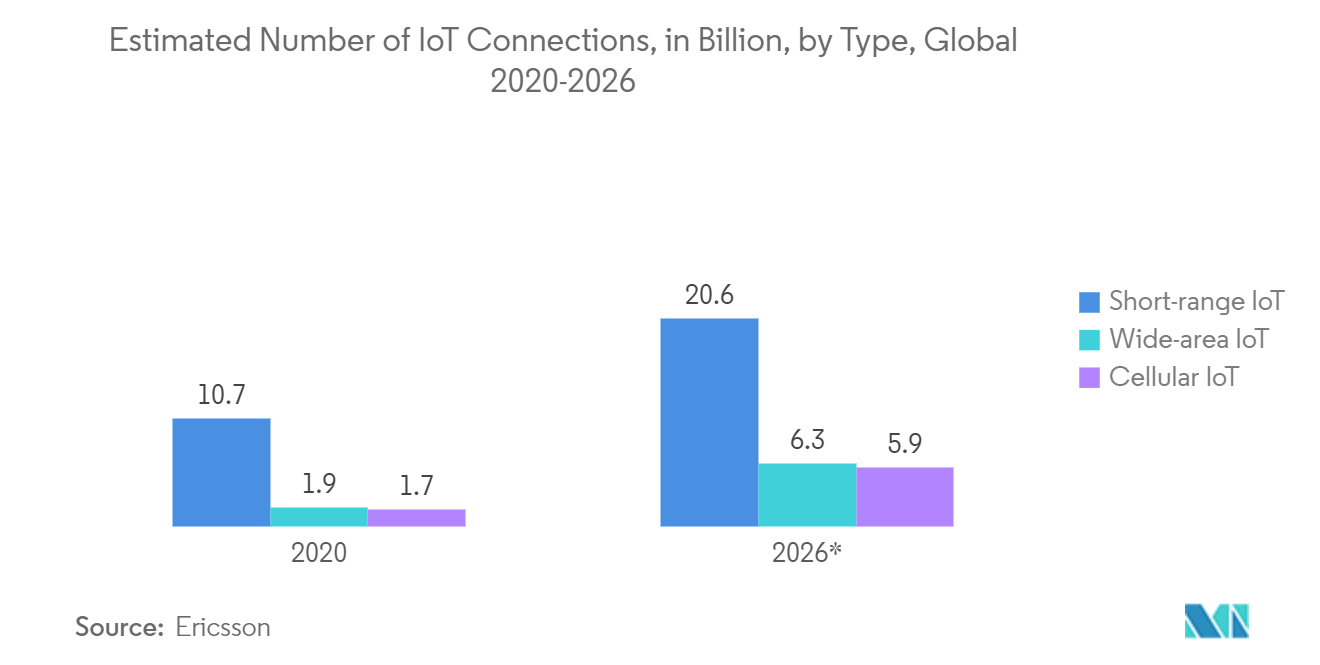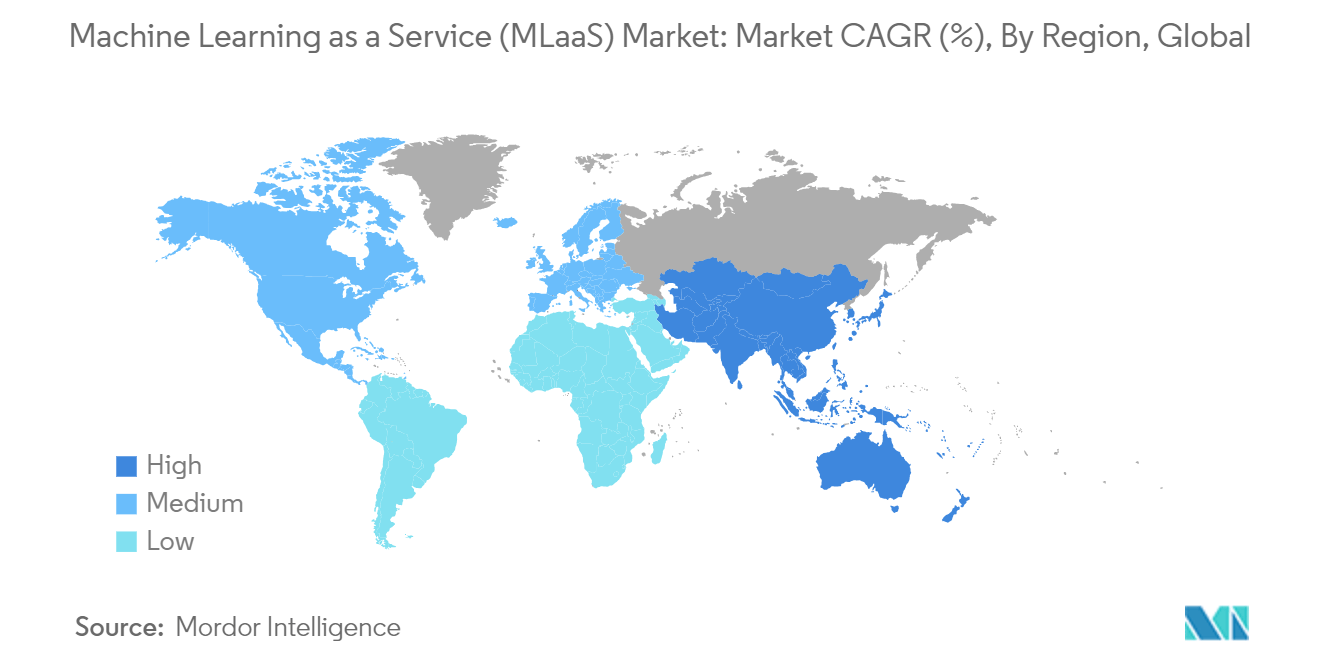Market Trends of Machine Learning As A Service (MLaaS) Industry
Increasing Adoption of IoT and Automation is Expected to Drive the Market Growth
- IoT operations ensure that thousands or more devices run correctly and safely on an enterprise network and that the data being collected is timely and accurate. While sophisticated back-end analytics engines work on the major bit of data stream processing, ensuring data quality is often left to obsolete methodologies. Some IoT platform vendors are baking machine learning technology to boost their operations management capabilities to ensure rein in sprawling IoT infrastructures.
- Machine learning may demystify the hidden patterns in IoT data by analyzing significant volumes of data utilizing sophisticated algorithms. ML inference may supplement or replace manual processes with automated systems using statistically derived actions in critical processes. Solutions built on ML automate the IoT data modeling process, thus, removing the circuitous and labor-intensive activities of model selection, coding, and validation.
- Small businesses adopting IoT may significantly save on the time-consuming machine learning process. MLaaS vendors may conduct more queries more quickly, providing more types of analysis to get more actionable information from vast caches of data generated by multiple devices in the IoT network.
- As per Zebra's Manufacturing Vision Study, smart asset monitoring systems based on IoT and RFID were predicted to outperform traditional, spreadsheet-based approaches by 2022. According to research conducted by Microsoft Corporation, 85% of businesses have at least one IIoT use case project. This figure was expected to rise, as 94% of respondents said they would pursue IIoT initiatives in 2021. These instances may create opportunities for MLaaS vendors in the near future.
- The increasing use of cloud-based technology in many organizations benefits data transfer due to the ease with which these connections may be formed. This allows every employee in an organization to access data, increasing a company's cost efficiency. In April 2023, Oracle Corporation and GitLab Inc. announced the availability of a new offering that expands ML and AI functionalities. Customers can run AI and ML workloads with GPU-enabled GitLab runners on Oracle Cloud Infrastructure (OCI) and get access to deploy cloud services wherever needed, including on-premises and multi-cloud environments.

North America is Expected to Hold Significant Market Share
- North America is expected to hold a significant share in the market owing to the robust innovation ecosystem, fueled by strategic federal investments into advanced technology, complemented by the presence of visionary scientists and entrepreneurs coming together from globally renowned research institutions, which has propelled the development of MLaaS.
- For instance, in May 2023, The U.S. National Science Foundation (NSF), in collaboration with higher education institutions, other federal agencies, and other stakeholders, announced to invest USD 140 million to establish seven new National Artificial Intelligence Research Institutes (AI) institutes. Through this investment, the government aims to promote AI systems and technologies and develop a diverse AI workforce in the United States to advance a cohesive approach to AI-related opportunities and risks. Such investments by the regional government will create new growth opportunities for the studied market.
- Because of remarkable growth in countries such as Canada and the United States, the North American region accounts for most of Mlaas business. These countries are home to a wide diversity of small and large start-ups. As a result, the market for machine learning as a service is expanding in North America. Regarding technological breakthroughs and use, North America is the fastest-growing region worldwide in the machine learning as a service market. It has the infrastructure and funds to invest in machine learning as a service. Furthermore, increased defense spending and technical improvements in the telecommunications industry will likely boost market growth throughout the forecast period.
- The region also witnessed a significant proliferation of 5G, IoT, and connected devices. As a result, communications service providers (CSPs) need to manage an ever-growing complexity efficiently through virtualization, network slicing, new use cases, and service requirements. This is expected to drive MLaaS solutions as traditional network and service management approaches are no longer sustainable.
- Moreover, major technology firms in the region, such as Microsoft, Google, Amazon, and IBM, have stepped up as major players in the ML-as-a-service race. Because each of the companies has a sizeable public cloud infrastructure and ML platforms, this allows the companies to make machine learning-as-a-service a reality for those looking to use AI for everything ranging from customer service to robotic process automation, marketing, analytics, predictive maintenance, etc., to assist in training the AI date models being deployed.
- The region's ML marketplace is changing due to the cloud, and serverless computing allows developers to get ML applications up and running quickly. Additionally, the prime driver of the ML-as-a-service business is information services. The most significant change serverless computing has brought in is eliminating the need to scale physical database hardware.

